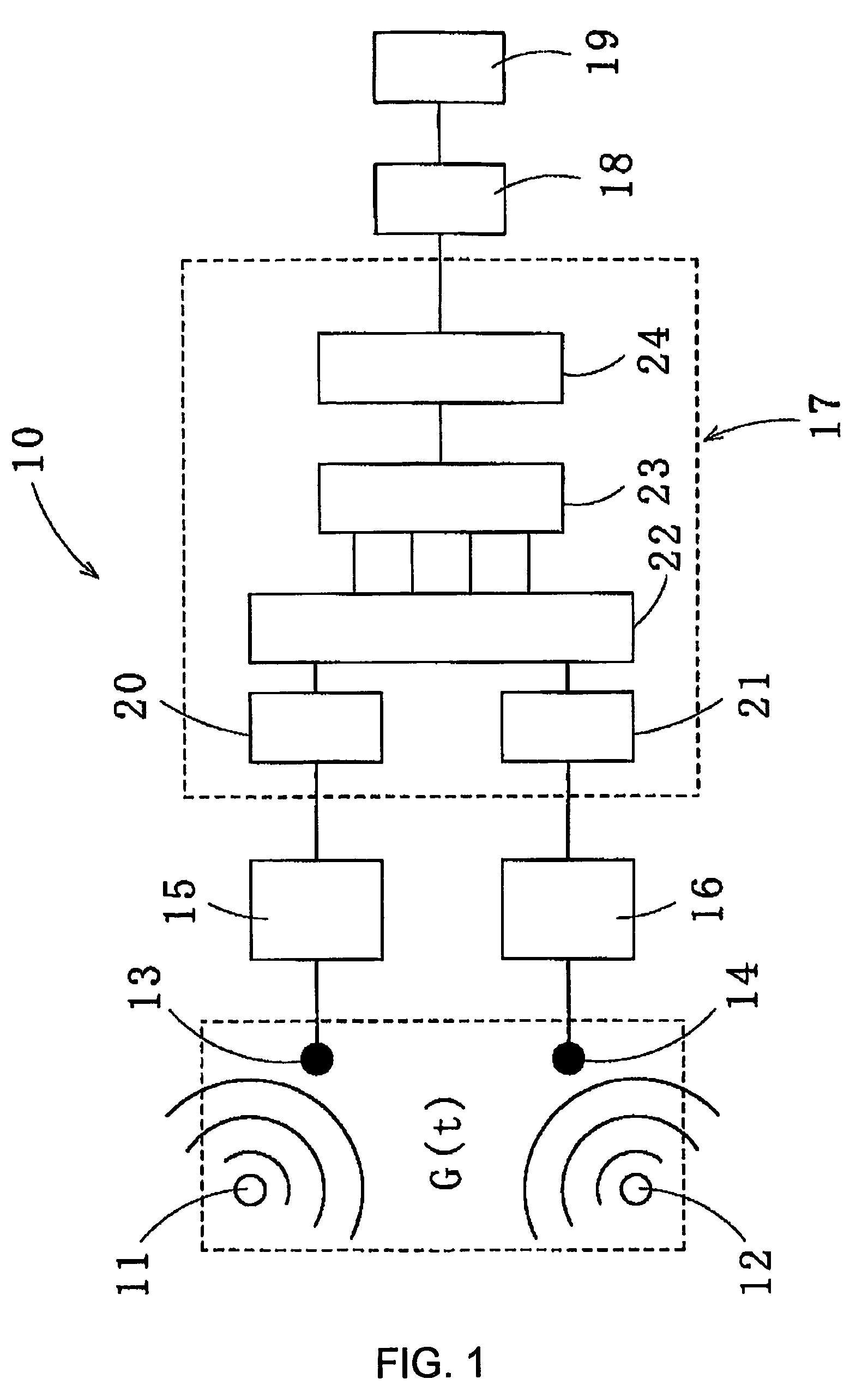Method for recovering target speech based on amplitude distributions of separated signals
a technology of target speech and amplitude distribution, which is applied in the direction of transducer casings/cabinets/supports, electrical transducers, instruments, etc., can solve the problems of difficult identification of target speech or noise one of the resultant split spectra after permutation correction, and the ineffectiveness of envelope methods depending on sound collection conditions, etc., to achieve accurate evaluation of the shape of amplitude distribution, rapid acquisition of entropy, and reduced calculation load
- Summary
- Abstract
- Description
- Claims
- Application Information
AI Technical Summary
Benefits of technology
Problems solved by technology
Method used
Image
Examples
example 1
1. EXAMPLE 1
[0073]Experiments for recovering target speech were conducted in an office with 747 cm length, 628 cm width, 269 cm height, and about 400 msec reverberation time as well as in a conference room with the same volume and a different reverberation time of about 800 msec. Two microphones were placed 10 cm apart. A noise source was placed at a location 150 cm away from one microphone in a direction 10° outward with respect to a line originating from the microphone and normal to a line connecting the two microphones. Also a speaker was placed at a location 30 cm away from the other microphone in a direction 10° outward with respect to a line originating from the other microphone and normal to a line connecting the two microphones.
[0074]The collected data were discretized with 8000 Hz sampling frequency and 16 Bit resolution. The Fourier transform was performed with 32 msec frame length and 8 msec frame interval by use of the Hamming window for the window function. As for separ...
example 2
2. EXAMPLE 2
[0082]Experiments for recovering target speech were conducted in a vehicle running at high speed (90-100 km / h) with the windows closed, the air conditioner (AC) on, and a rock music being emitted from the two front loudspeakers and two side loudspeakers. A microphone for receiving the target speech was placed in front of and 35 cm away from a speaker who was sitting at the passenger seat A microphone for receiving the noise was placed 15 cm away from the microphone for receiving the target speech in a direction toward the window or toward the center. Here, the noise level was 73 dB. The experimental conditions such as speakers, words, microphones, a separation algorithm, and a sampling frequency were the same as those in Example 1.
[0083]First, the spectra v11 and v22 obtained from the separated signal spectra U1 and U2 which had been obtained through the FastICA algorithm were visually inspected to see if they were separated well enough to enable us to judge if permutati...
PUM
 Login to View More
Login to View More Abstract
Description
Claims
Application Information
 Login to View More
Login to View More - R&D
- Intellectual Property
- Life Sciences
- Materials
- Tech Scout
- Unparalleled Data Quality
- Higher Quality Content
- 60% Fewer Hallucinations
Browse by: Latest US Patents, China's latest patents, Technical Efficacy Thesaurus, Application Domain, Technology Topic, Popular Technical Reports.
© 2025 PatSnap. All rights reserved.Legal|Privacy policy|Modern Slavery Act Transparency Statement|Sitemap|About US| Contact US: help@patsnap.com



